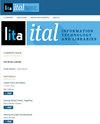利用核知识分类法探索最终项目趋势
IF 1.5
4区 管理学
Q3 COMPUTER SCIENCE, INFORMATION SYSTEMS
引用次数: 0
摘要
印度尼西亚国家核能机构(BATAN)分类法是一个核能力领域,分为六个类别。核技术理工学院作为一个核教育机构,在根据BATAN分类法的领域组织学生出版物方面面临着挑战,特别是在图书馆。本研究的目的是利用文本挖掘确定最有效的自动文档分类模型,对印度尼西亚学生期末项目文档进行分类,并监控每个类别中核领域的发展。kNN算法用于对文档进行分类,并通过比较余弦相似度、相关相似度和骰子相似度,以及向量创建二进制项出现率和TF-IDF来识别最佳模型。从BATAN存储库中总共获得了99个标记为参考数据的文档,并准备了536个未标记的最终项目文档用于预测。在本研究中,使用了干、停词过滤、n-grams和长度过滤等几种文本挖掘方法。k的个数为4,余弦二进制是最好的模型,精度值为97%,与TF-IDF相比,kNN在处理印度尼西亚语言文档中的二进制项时效果最佳。核装置与设施工程是最受学生欢迎的领域,而管理是最不受欢迎的领域。然而,同位素和辐射是核技术化学中最突出的领域。文本挖掘可以帮助图书馆员根据特定的标准对文档进行分组。也有可能根据文件的增加和在不同情况下采用类似方法来观察每一现有类别的演变。由于课程设置和所提供的课程,核科学的每个学科在研究计划中的发展是不同的和多样的。本文章由计算机程序翻译,如有差异,请以英文原文为准。
Exploring Final Project Trends Utilizing Nuclear Knowledge Taxonomy
The National Nuclear Energy Agency of Indonesia (BATAN) taxonomy is a nuclear competence field organized into six categories. The Polytechnic Institute of Nuclear Technology, as an institution of nuclear education, faces a challenge in organizing student publications according to the fields in the BATAN taxonomy, especially in the library. The goal of this research is to determine the most efficient automatic document classification model using text mining to categorize student final project documents in Indonesian and monitor the development of the nuclear field in each category. The kNN algorithm is used to classify documents and identify the best model by comparing Cosine Similarity, Correlation Similarity, and Dice Similarity, along with vector creation binary term occurrence and TF-IDF. A total of 99 documents labeled as reference data were obtained from the BATAN repository, and 536 unlabeled final project documents were prepared for prediction. In this study, several text mining approaches such as stem, stop words filter, n-grams, and filter by length were utilized. The number of k is 4, with Cosine-binary being the best model with an accuracy value of 97 percent, and kNN works optimally when working with binary term occurrence in Indonesian language documents when compared to TF-IDF. Engineering of Nuclear Devices and Facilities is the most popular field among students, while Management is the least preferred. However, Isotopes and Radiation are the most prominent fields in Nuclear Technochemistry. Text mining can assist librarians in grouping documents based on specific criteria. There is also the possibility of observing the evolution of each existing category based on the increase of documents and the application of similar methods in various circumstances. Because of the curriculum and courses given, the growth of each discipline of nuclear science in the study program is different and varied.
求助全文
通过发布文献求助,成功后即可免费获取论文全文。
去求助
来源期刊

Information Technology and Libraries
管理科学-计算机:信息系统
CiteScore
2.90
自引率
5.60%
发文量
25
审稿时长
1 months
期刊介绍:
Information Technology and Libraries publishes original material related to all aspects of information technology in all types of libraries. Topic areas include, but are not limited to, library automation, digital libraries, metadata, identity management, distributed systems and networks, computer security, intellectual property rights, technical standards, geographic information systems, desktop applications, information discovery tools, web-scale library services, cloud computing, digital preservation, data curation, virtualization, search-engine optimization, emerging technologies, social networking, open data, the semantic web, mobile services and applications, usability, universal access to technology, library consortia, vendor relations, and digital humanities.
 求助内容:
求助内容: 应助结果提醒方式:
应助结果提醒方式:


